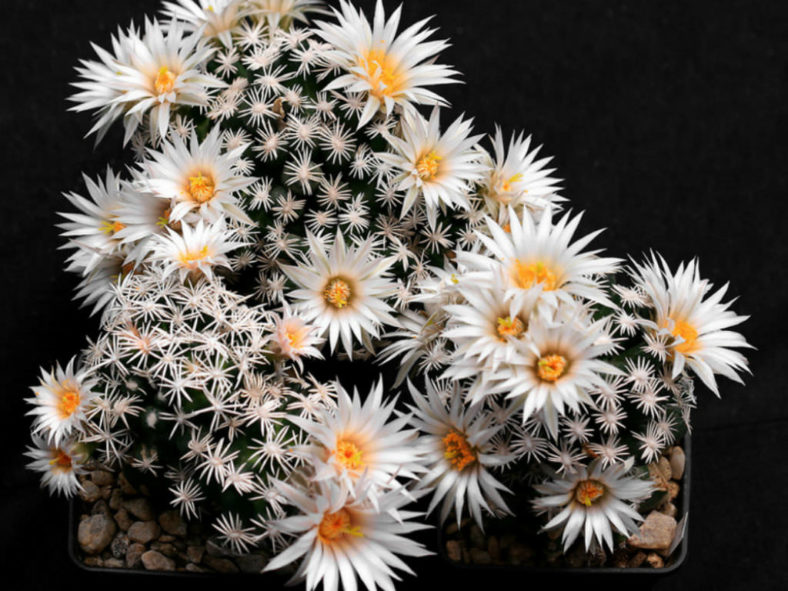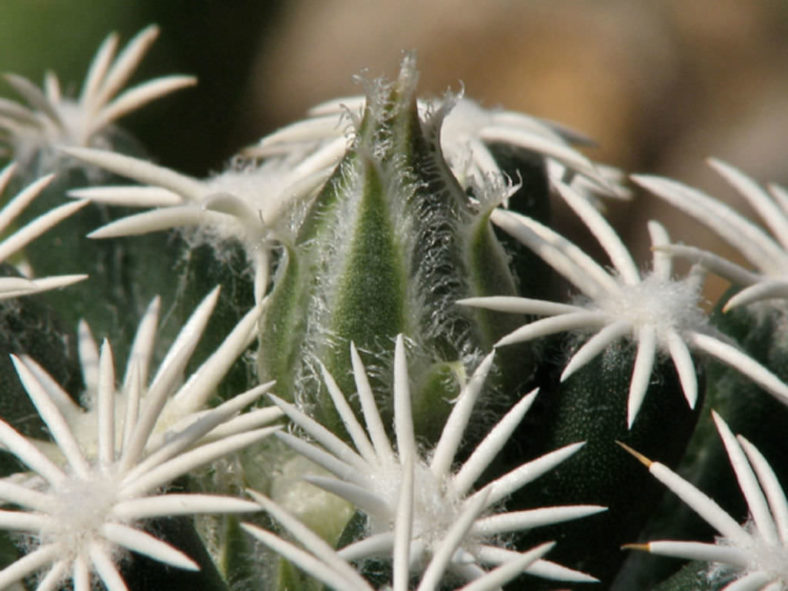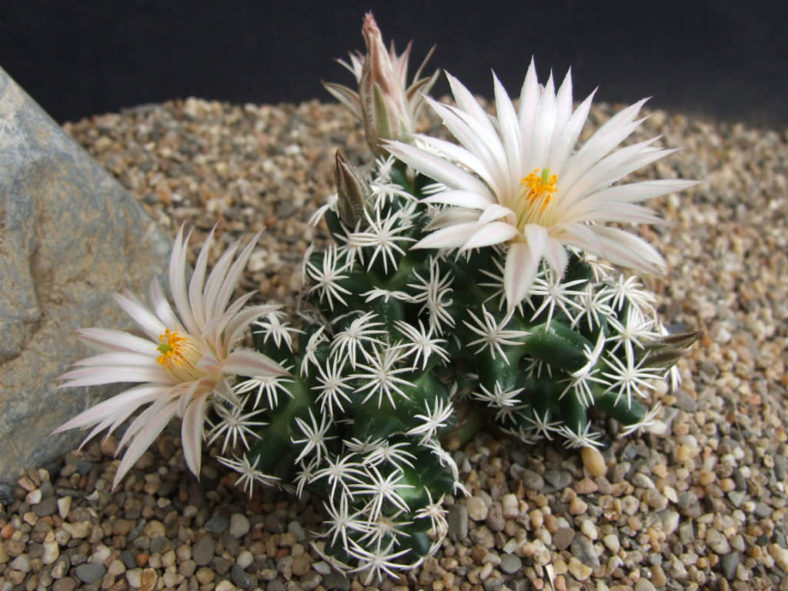Scientific Name
Escobaria abdita Řepka & Vaško
Synonym(s)
Escobaria abdita subsp. abdita, Neobesseya abdita
Scientific Classification
Family: Cactaceae
Subfamily: Cactoideae
Tribe: Cacteae
Genus: Escobaria
Etymology
The specific epithet "abdita" (pronounced "AB-dee-tuh") means "hidden, concealed, secret, having been concealed; removed, set aside, banished, having been banished." It refers to the habit of this species, which typically grows hidden below the soil surface for most of the year in its native habitat.
Origin
Escobaria abdita is native to Mexico. It occurs south of El Oro, a small town in Coahuila, in temporarily flooded depressions, immersed in the loamy soil practically throughout the year.
Description
Escobaria abdita is an attractive, small, geophytic cactus with a swollen root and dark green stems with tubercles arranged into spirals, each bearing a cluster of short, ivory to chalk white spines at the tip. The stems are subspherical with a height of up to 1 inch (2.5 cm) and a diameter of 0.8 inches (2 cm). The swollen root has an almost ellipsoidal shape and can measure up to 2.4 inches (6 cm) in length and 1.2 inches (3 cm) in diameter. The areoles are oval, initially whitish and woolly, becoming gray or dark gray as they age and losing their wool. Each areole typically bears 11 to 15 radial spines, which can grow up to 0.2 inches (0.5 cm) long, while central spines are absent.
The flowers have white tepals with light pink stripes and yellow anthers. They are funnel-shaped, appear in late spring from the youngest areoles, and can reach a length of 1.8 inches (4.5 cm) and a diameter of 1.4 inches (3.5 cm). The fruits are obovoid, gray-green to brown-green, and can grow up to 0.3 inches (0.8 cm) in length and diameter. Each fruit can contain 5 to 30 light brown seeds.

Hardiness
USDA hardiness zones 9b to 11b: from 25°F (-3.9°C) to 50°F (10°C).
How to Grow and Care
Escobarias are susceptible to rot and require well-drained soil without excess water or stagnation. It has been observed that plants also suffer from environmental humidity, which should preferably remain at a very low level (30% to 50%). Avoid watering during the winter, when the plant is dormant. Watering Escobaria in cold environmental conditions will almost certainly lead to the plant's death. The plants, whose growth is typically quite slow, perceive a significant temperature difference between night and day in the growing season.
The experienced grower knows well the difficulties of survival of the members of this genus, which is certainly not one of the easiest to grow. The seed germination rate is lower than that of other genera, and other propagation methods are preferable, such as offsets or cuttings.
Learn more at How to Grow and Care for Escobaria.
Links
- Back to genus Escobaria
- Succupedia: Browse succulents by Scientific Name, Common Name, Genus, Family, USDA Hardiness Zone, Origin, or cacti by Genus
Photo Gallery
Click on a photo to see a larger version.


